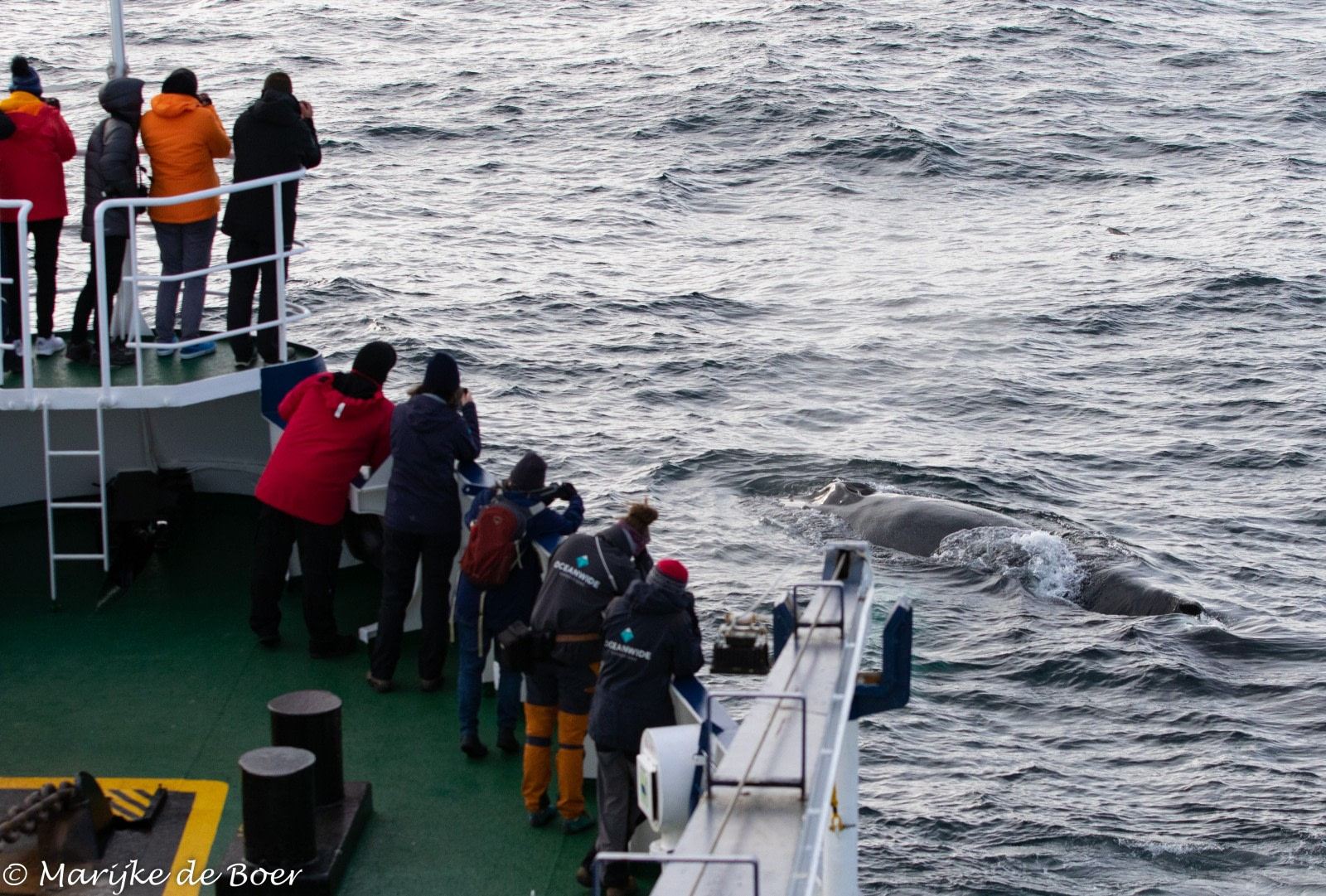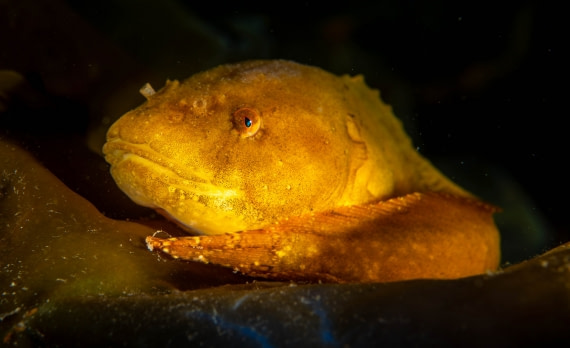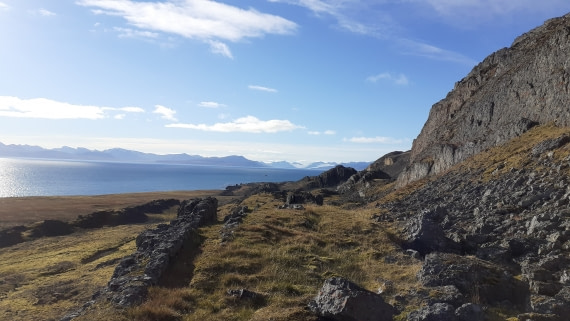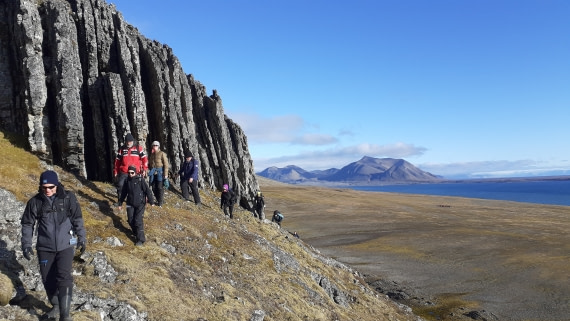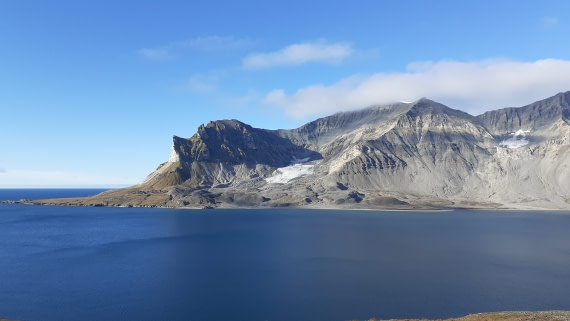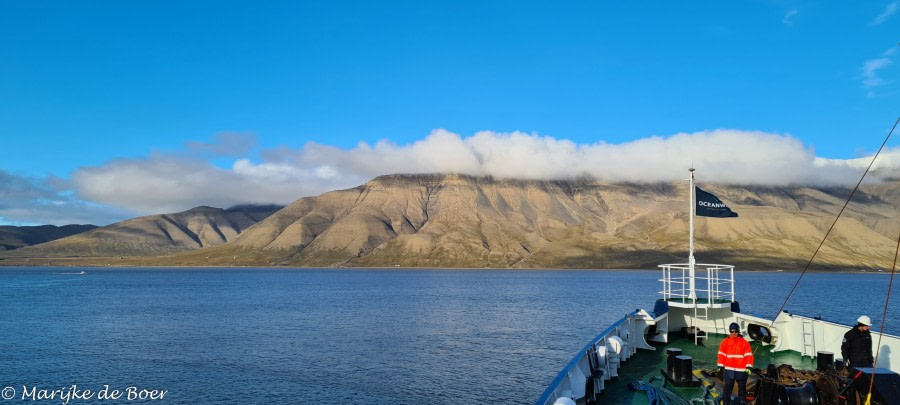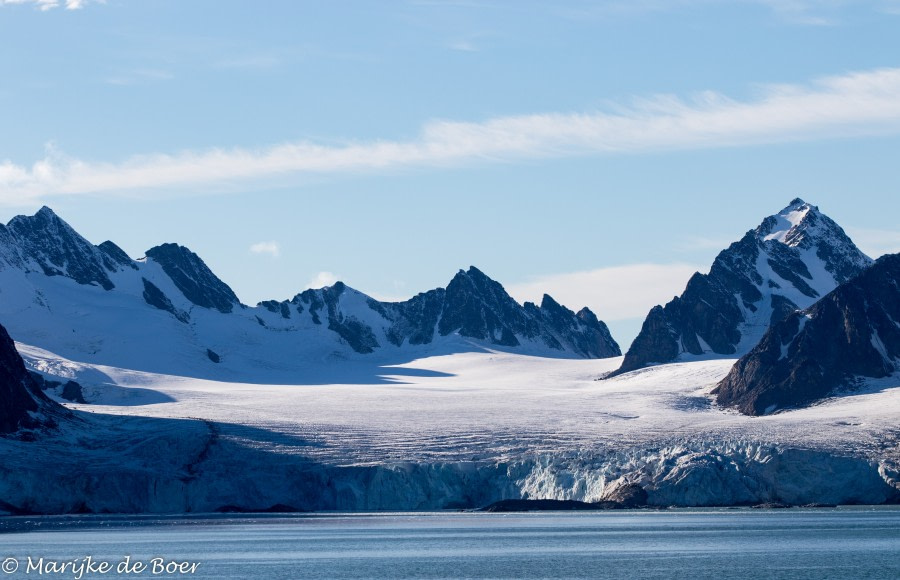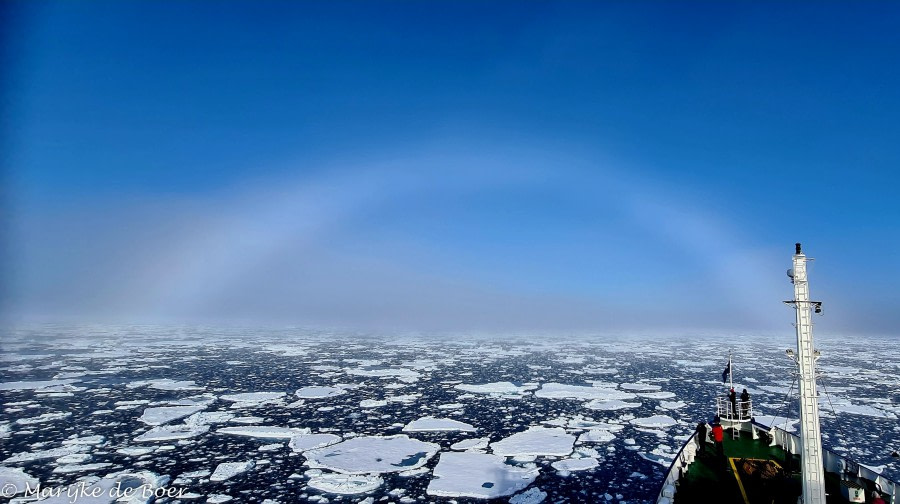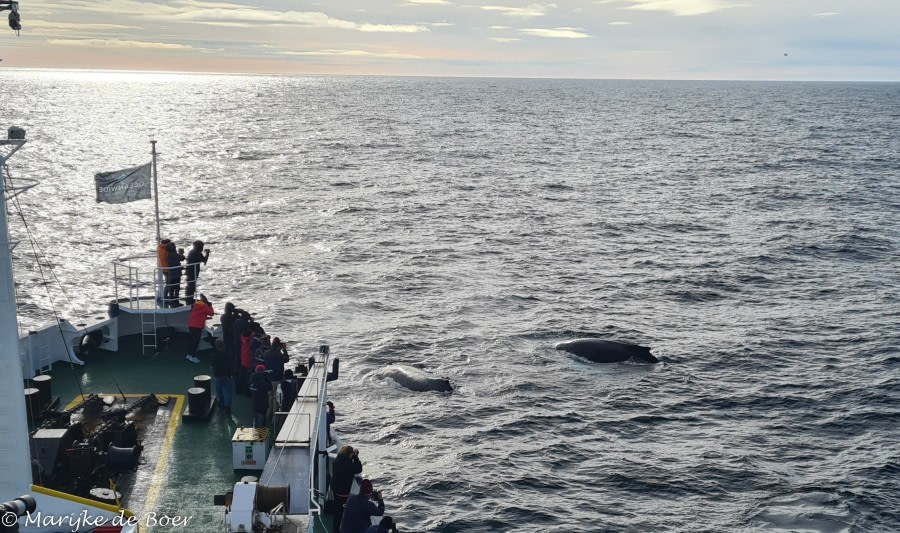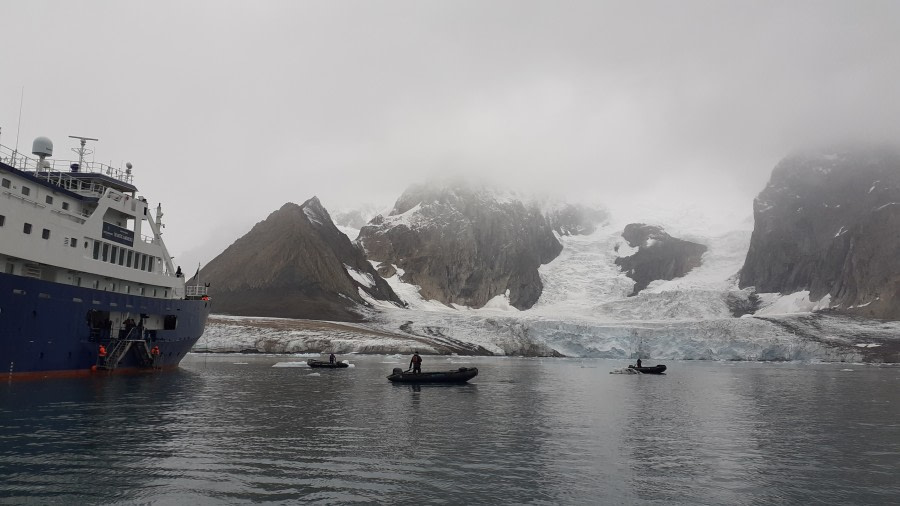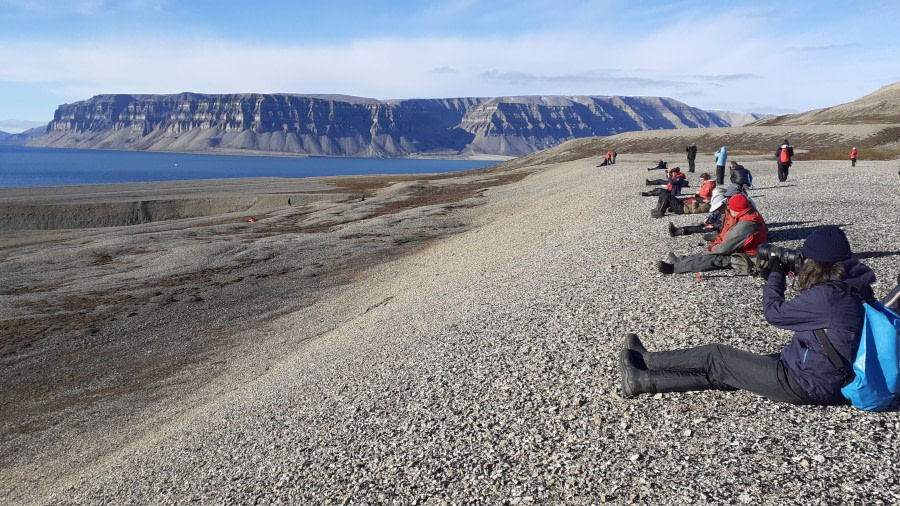| Fecha: | 20.08.2022 |
| Posición: | 78°14.5’N 015°32.6’E |
It was a beautiful sunny day for the start of our voyage and after a day exploring Longyearbyen we made our way to the Plancius, which was moored at the coal pier just outside town. We were met at the gangway by members of the Expedition team and shown to our cabins by the hotel staff. After settling into our cabins, we were invited to the Lounge for the mandatory safety briefing from our First Officer Maikel. This outlined procedure in the event of an emergency on board. We had an abandon ship drill and donned our big orange lifejackets as we gathered in the lounge before making our way to the lifeboats. Shortly after the drill, we watched the mooring lines being cast off and we were on our way on our Svalbard adventure! How exciting! It was a beautiful evening as we sailed out into Isfjord and we hoped this weather would be with us for the next 9 days. As we began our navigation there was a call over the PA system that whale blows had been seen and they were identified as Fin whales and then we started to see dolphins feeding amongst them. These were White beaked dolphins and there must have been around 60 animals putting on a show for us and the day trip boat out from Longyearbyen. What a great start to our trip! It was then time to reconvene once again and this was a chance to meet and toast our voyage with our Captain and also meet members of the Expedition team, the guides who would be taking us ashore in the coming days. Dinner was served and we got to meet some of our fellow travellers and after dinner the last task of the day was to collect our rubber boots ready for the landings we would be doing in the days ahead.
